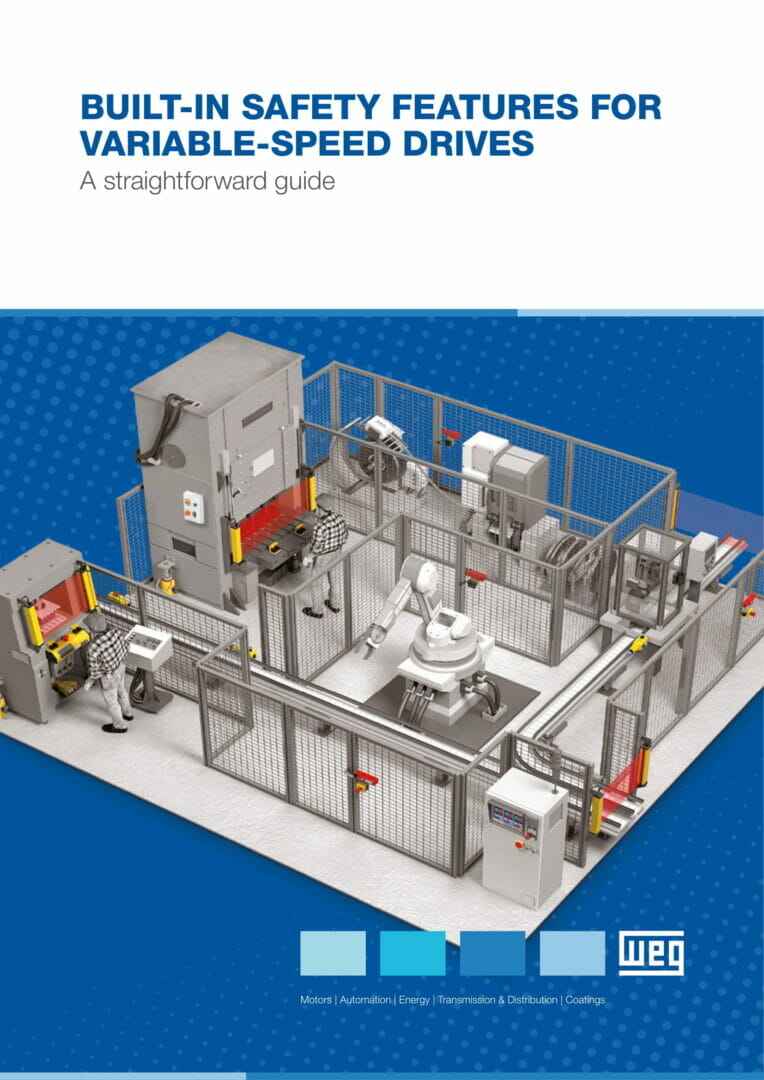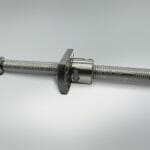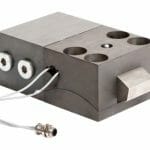~ Building safety systems for effective failure prevention ~
Functional safety is more important than ever as production systems and processes become more sophisticated. When building safety systems, variable speed drives (VSDs) can be integrated into systems to ensure that standards are met and performance level is improved. Global automation manufacturer WEG has released a free whitepaper including architecture design examples for implementing VSDs in different safety systems.
Functional safety covers features created for the detection and prevention of dangerous failures, or limitation of the damage they may cause. As industrial operations and processes increase in complexity, the need for functional safety also grows. Safety conditions should apply to all stages of machine lifecycles, from the initial design process to operation and decommissioning.
Many VSDs have built in safety features and can be integrated into safety systems to maximise efficiency and improve functional safety. Standard EN ISO 13849-1 establishes requirements for safety-related parts used in control systems. The standard assesses machinery safety based on control system architecture, component reliability and failure detection, and assigns a Performance Level (PL). PL refers to the probability of a dangerous failure occurring, and the ability of the system to perform their safety functions. The levels are ranked from “PL a” up to “PL e”, with PL a referring to systems with minimum safety requirements, and PL e the highest safety requirements.
Machinery is assigned a Performance Level requirement (PLr) based on the severity of injuries it may cause, the frequency of the hazard occurring and the probability of limiting harm. This assessment can be used to evaluate risk and determine which PL is required, allowing manufacturers to build their safety system architecture accordingly.
PL a and PL b
PL a and PL b ratings apply to machinery where risk of injury in the case of failure or loss of function is low and complex safety architecture is not necessary. This level can be typically achieved through appropriate selection of safety components and use of VSDs.
PL c
To achieve PL c, the system must typically detect losses of safety function during checks. Addition of a safety relay can ensure this standard is met by detecting failures and monitoring the energy generated by a VSD. This system architecture can rapidly inform operators of any detected risks to allow appropriate maintenance to be carried out.
PL d
PL d systems require more complexity as they offer a higher contribution to overall safety level. This architecture typically ensures that the safety function will still be performed even in the event of a single fault, but not if faults accumulate. The addition of a safety contactor in series with a VSD for circuit monitoring and control can achieve this Performance Level.
PL e
PL e systems offer the highest contributions to overall risk reduction, and thus have more components to ensure that safety functions are always carried out when failures occur. This level is reserved for machines with the most potential to cause serious damage or injury in the event of a failure.
A more complex architecture is required to achieve this level of functional safety, with the previous devices recommended alongside programmable relays and safety programmable logic controllers (PLCs). PLCs can guard against failures and ensure that when they do occur, the equipment is placed in a safe condition.
All PLs can be achieved by using a VSD integrated into a range of architectural structures depending on the existing infrastructure and PLr. However, choosing a VSD with built-in safety features can bypass the need for many external safety devices to meet any PL. VSDs can improve actuation and restart times and have integrated functions to detect failures and maintain safety features. Opting for a VSD with these features offers a more compact solution, with reduced maintenance and wiring costs and monitoring of both internal and external failures.
Functional safety is a key consideration in industrial processes and it is important to have architecture in place that is appropriate for the risk level of an operation. VSDs can ensure the safe running of machinery and mitigation of harm, whether they are integrated into an existing system with external devices or used as a standalone safety system. Download the WEG whitepaper for more information.








